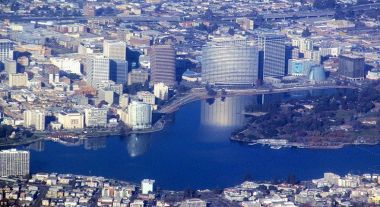ABOUT Lake Baikal
Lake Baikal (; Russian: озеро Байкал, tr. Ozero Baykal, IPA: [ˈozʲɪrə bɐjˈkaɫ]; Buryat: Байгал нуур, Baigal nuur) is a rift lake located in southern Siberia, Russia, between Irkutsk Oblast to the northwest and the Buryat Republic to the southeast.
Lake Baikal is the largest freshwater lake by volume in the world, containing 22–23% of the world's fresh surface water. With 23,615.39 km3 (5,670 cu mi) of fresh water, it contains more water than the North American Great Lakes combined. With a maximum depth of 1,642 m (5,387 ft), Baikal is the world's deepest lake. It is considered among the world's clearest lakes and is considered the world's oldest lake, at 25–30 million years. It is the seventh-largest lake in the world by surface area.
Like Lake Tanganyika, Lake Baikal was formed as an ancient rift valley and has the typical long, crescent shape, with a surface area of 31,722 km2 (12,248 sq mi). Baikal is home to thousands of species of plants and animals, many of which are endemic to the region. It is also home to Buryat tribes, residing on the eastern side of the lake, raising goats, camels, cattle, sheep, and horses, where the mean temperature varies from a winter minimum of −19 °C (−2 °F) to a summer maximum of 14 °C (57 °F).The region to the east of Lake Baikal is referred to as Transbaikalia, and the loosely defined region around it is sometimes known as Baikalia. The lake was declared a UNESCO World Heritage Site in 1996.
Lake Baikal is the largest freshwater lake by volume in the world, containing 22–23% of the world's fresh surface water. With 23,615.39 km3 (5,670 cu mi) of fresh water, it contains more water than the North American Great Lakes combined. With a maximum depth of 1,642 m (5,387 ft), Baikal is the world's deepest lake. It is considered among the world's clearest lakes and is considered the world's oldest lake, at 25–30 million years. It is the seventh-largest lake in the world by surface area.
Like Lake Tanganyika, Lake Baikal was formed as an ancient rift valley and has the typical long, crescent shape, with a surface area of 31,722 km2 (12,248 sq mi). Baikal is home to thousands of species of plants and animals, many of which are endemic to the region. It is also home to Buryat tribes, residing on the eastern side of the lake, raising goats, camels, cattle, sheep, and horses, where the mean temperature varies from a winter minimum of −19 °C (−2 °F) to a summer maximum of 14 °C (57 °F).The region to the east of Lake Baikal is referred to as Transbaikalia, and the loosely defined region around it is sometimes known as Baikalia. The lake was declared a UNESCO World Heritage Site in 1996.



